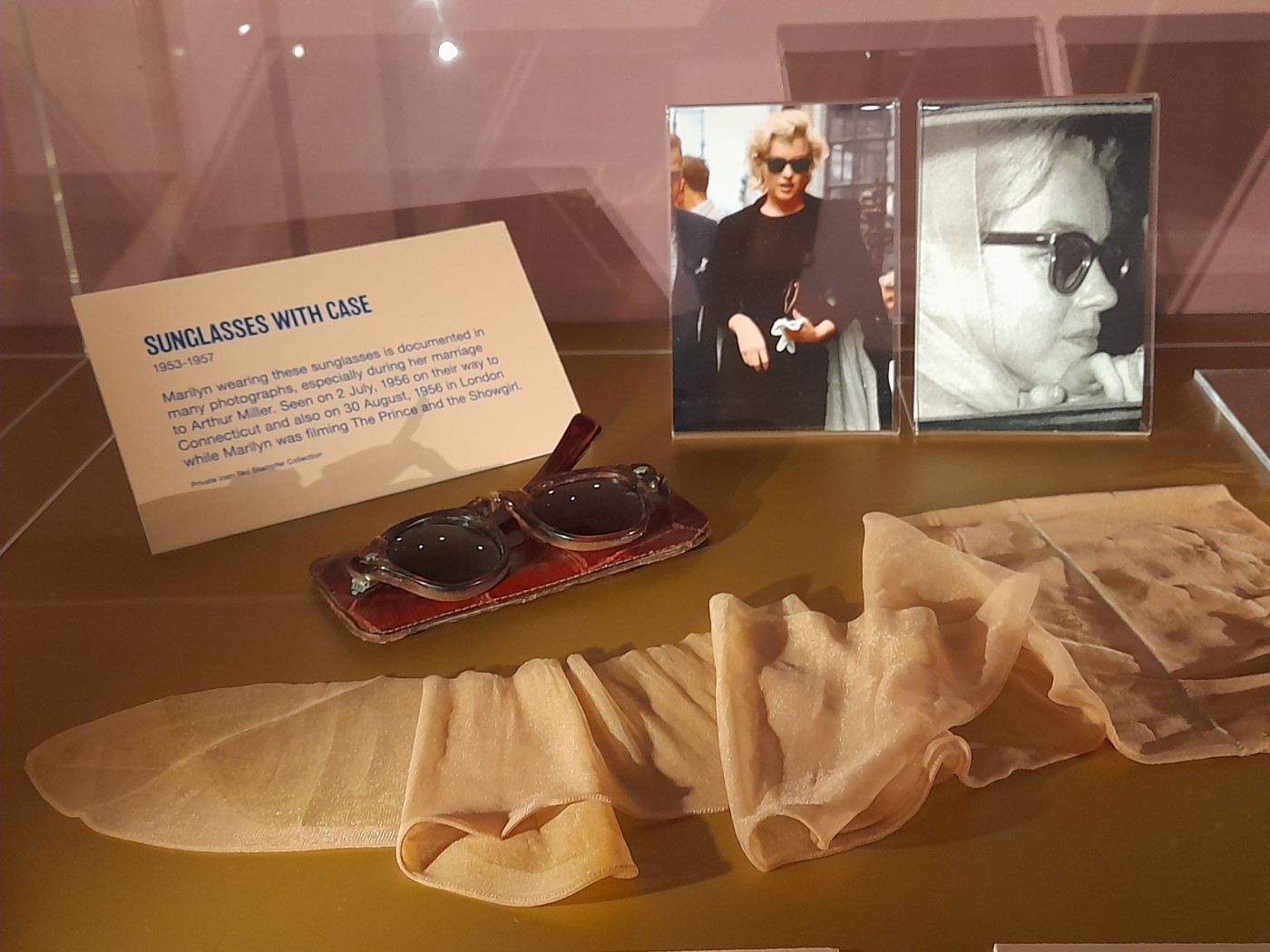- youtube
- bluesky
- Home
- About
- Costume Journal
- Membership
- Conference & Events
- Grants & Awards
- News & Social
In this week's blog post, dress and design historian Victoria Haddock reviews Marilyn: The Exhibition, currently on display at London Arches.
Marilyn Monroe remains a cultural phenomenon sixty years after her passing. In what is being billed as the ‘first of its kind in the UK’, a new exhibition at Arches London Bridge offers a rare opportunity to discover the woman behind the legend. In Marilyn: The Exhibition, a carefully curated collection of 250 personal items from the private collection of German art collector Ted Stampfer (the owner of the world’s largest collection of Marilyn Monroe objects) are on display alongside archival film, quotes, and photographs, and artworks.
After her death in 1962, Monroe’s possessions were left to her close friend Lee Strasberg, the owner of the Actor’s Studio in New York where Marilyn had studied method acting. The pieces were locked away for almost forty years before Lee’s widow began to sell pieces through major auction houses. Stampfer, who curated the exhibition, has said "It’s wonderful to be able to share these unique pieces which can give us a real insight into her life, allowing us today to get closer to the real Marilyn Monroe and her true identity."
The cavernous space of the Arches makes an interesting setting for the collection, with the exhibition laid out chronologically, displaying objects and images from each era of Monroe’s life. Family photographs, letters, receipts, and books accompany the different sections beginning with Marilyn’s early years, her discovery as a model, and covering her rise to fame, her marriages, the creation of her own production company, her death, and her enduring legacy. The exhibition doesn’t shy away from the darker aspects of Marilyn’s life, and her miscarriage and prescription drug use are covered sensitively. The strength of the exhibition lies in the placing of objects and photographs to illustrate Monroe’s contradictory personality. She was a vocal supporter of the civil rights movement, an entrepreneur, and the ultimate pin-up of the 1950s and 1960s, and these different aspects are highlighted with artful object curation that places self-help books next to a black chiffon scarf belonging to the actress.
The importance of Norma Jeane Mortenson’s transformation into Marilyn Monroe is a recurring thread throughout the exhibition. A collection of her cosmetics, including hair curlers, bottles of half-used lotions and a pair of false eyelashes, give a behind the scenes glimpse into the work it took to transform into a sex symbol, but appear hauntingly discordant on show in a case when not adorning one of the world’s most famous faces. There are a number of pieces of clothing and accessories on display in glass cases that give visitors a chance to discover Marilyn’s personal style, including items from Jax and Pucci. Monroe’s film costumes usually take precedence in auctions and exhibitions, and it felt special to be able to view the everyday items that she wore around the home, for photoshoots, and when travelling (here shown alongside photographs of Marilyn wearing the items). As the pieces had been left untouched in storage, many still have stains and bleach blonde hairs visible from Marilyn’s use which makes them feel particularly poignant and a reminder that for all the glamour that surrounded her, the “Blonde Bombshell” was mortal. Stampfer’s decision to not have the items conserved for display is an example of the power that Monroe still exudes, and this is discussed further in the exhibition with a replica of the iconic Happy Birthday dress that Kim Kardashian damaged when she wore to the Met Gala in 2022.
Marilyn’s interest in fashion is bookended in the exhibition by a sketch she created as a young girl, of two women in 1940s styles, and a replica of the gold lame pleated dress worn by Monroe in Gentleman Prefer Blondes (1957). The gown is shown with an original letter from the designer Travilla inviting Marilyn to view his new fashion collection in 1960. Travilla famously designed the wardrobe for eight films with Monroe and, on many occasions, for her personal use.
If you’re a fan of Monroe, there’s probably not much new to learn from the descriptions of her life that you won’t already know, but what the exhibition offers is the chance to see such a wide range of personal objects on public display that offer a different glimpse into the life of one of the 20th century’s biggest stars.
The exhibition run has been extended, now closing June 1st 2025.

Image courtesy of Victoria Haddock.